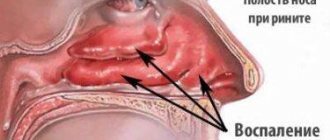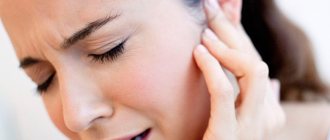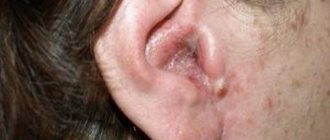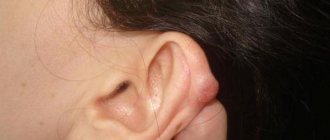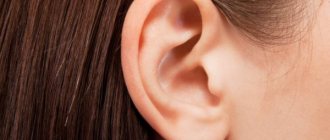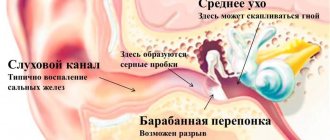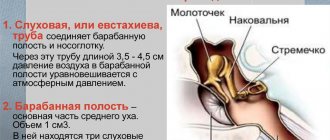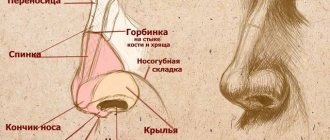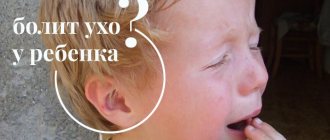Ear pain, like toothache, can become unbearable, deprive a person of sleep, and interfere with the performance of usual activities. Diagnosis of some ear diseases is simple. For example, the ear hurts even with slight pressure on the tragus - probably the cause is otitis externa. It is important to remember: misdiagnosis leads to harmful inappropriate treatment. Lack of qualified, timely consultation can provoke irreversible processes and lead to hearing loss. Otitis - translated from Greek means inflammation of the ear. It can be external, middle, internal.
Otitis externa is an inflammation of the skin of the ear canal or shell due to infection. The most common causative agents of the disease are staphylococcus and Pseudomonas aeruginosa. This disease is very common. It is observed among all age categories. People with weakened immune systems, those involved in water sports, and those with chronic diseases are especially susceptible. The disease does not cause serious complications, however, when the ear hurts, it sharply worsens the quality of life and reduces ability to work.
Symptoms of external otitis:
- Pain when pressing on the tragus, touching the shell;
- Decreased hearing level;
- Discharge from the ear;
- Swelling of the ear canal;
- Unpleasant odor;
- Ear congestion;
- Temperature increase.
Tragus of the ear. Structure and main functions
Tragus ear
This area of the hearing organ is an outgrowth of cartilaginous tissue that plays a significant role in the functioning of the body. The tragus of the ear is responsible for a person’s perception of the strength of sounds coming from behind and their direction.
Among the main functions performed by this body are the following:
- Determining the location of noises and sounds, reflecting them from behind.
- Increased ear sensitivity by correcting the frequency of sound waves.
- Protection of the auditory organ from penetration of pathogenic microflora and foreign objects.
- Warning about secondary bacterial damage to foci of inflammation during the development of otitis of the external or middle ear.
Thanks to this cartilaginous growth, a person has the opportunity to promptly suspect the occurrence of infectious ear diseases. Light pressure on the protrusion may indicate that a person is developing otitis media or mastoiditis. These inflammatory diseases will be indicated by acute pain that appears when pressed. In addition, severe hyperemia of the skin of this part of the auricle may also indicate trouble.
The tragus has an assistant - the antitragus. It is located on the other side of the ear, through the ear canal, and is practically invisible. The functions performed by this protrusion include protecting a person from high-frequency sound waves emanating from the front and sides.
Worth knowing! The shape and size of the tragus are individual for each person. They have a direct connection with the characteristics of the body. Sometimes there is a congenital deformation of the organ, completely changing its appearance.
Diagnosis and prevention of disease
The disease is diagnosed based on the patient's complaints: congestion, pain,... The patient's ear hygiene methods are analyzed. A visual examination and otoscopy are performed. The specialist makes a smear to identify the pathogen. Recurring otitis externa in severe form is the reason for prescribing a blood test to detect HIV and sugar levels. There are a number of simple rules to prevent external otitis:
- Dry the ear canal thoroughly and carefully after water gets in;
- Support immunity;
- Avoid hypothermia;
- Do not clean the ear canal with objects;
- Wash your ears after swimming in the sea with fresh water;
- Prevent contact with varnish and paint;
- Control blood sugar.
It is important to remember: wax leaves the ear canal on its own.
The toilet organ consists of washing the sink. It is necessary to remove accumulated wax in the ear at a depth of 0.5 cm - 1 cm from the edge. The use of cotton swabs contributes to the appearance of sulfur plugs and otitis externa. An earache is a signal to seek help from a doctor. You should not self-medicate your ear. Similar symptoms may indicate different diseases. To establish an accurate diagnosis, the specialist will prescribe an additional examination.
An incorrect diagnosis and incorrect self-medication can aggravate the disease, cause complications, and provoke complete hearing loss.
The auricle performs a very important function for a person - it allows you to hear. It consists of many elements, one of which is the tragus. So, the tragus of the ear, what is it? The tragus of the ear is an elastic cartilaginous growth covered with thin epithelium. It is located on the outside of the ear. Thanks to its convenient location
, the tragus performs some important functions
Symptoms and manifestations of tragus inflammation
There are many reasons that provoke internal or external ear pain and they all have a different nature of occurrence, but despite this, the symptoms accompanying the pathological conditions are similar in their main manifestations. Most often, patients whose ear tragus is swollen and painful, inflamed due to otitis media or any other pathology affecting the ear, complain of the following negative signs :
- There is a noticeable decrease in auditory activity. All patients note the appearance of obvious hearing loss.
- Any contact with the auricle provokes unpleasant sensations that are acute in nature.
- The area in close proximity to the ear canal leading to the middle ear begins to itch obsessively and becomes noticeably red. Symptoms become more pronounced when a person tries to scratch the inflamed area in the ear.
Due to the fact that pain and swelling in this pathology extend exclusively to the parotid area, the pain is shooting or pulsating in nature, and pronounced pressure is noted in the ear cavity. Unpleasant manifestations intensify when swallowing and chewing movements are performed. If the symptoms that appear are ignored and adequate therapy is not started, the infection quickly penetrates into the inner part of the ear area and can provoke the development of serious consequences.
Causes of inflammation
- Otitis externa . A common disease characterized by this symptom. It is a local inflammation of the tragus of the ear or ear canal, part of the outer ear. Light pressure and even touch provokes acute attacks.
- Diffuse otitis. The inflammatory process spreads along the entire ear canal up to the outer part of the eardrum. Since the process covers a large area, the pain is diffuse and acute at rest and when pressed.
- Boils, carbuncles are limited inflammation of the outer ear, which has a general specific effect on the body. Only excision of the source of inflammation with further sanitation will help get rid of the symptoms.
- Otitis media. Advanced cases of inflammation of the outer ear, water entering the eardrum with the presence of infectious agents provokes inflammation of the structures of the middle part. Another reason is a change in pressure in the ear by blocking the free ear canal with a tragus. This has an irritating effect on the inflamed structures of the middle ear.
- Mechanical damage to the outer ear. Any scratches, blows, or hematomas are also accompanied by the release of inflammatory factors into the local bloodstream, which provokes pain.
Important! Any inflammation of the ear cavity is caused by the presence and proliferation of pathogenic flora (staphylococci, streptococci, Pseudomonas aeruginosa and others). Therefore, regular comprehensive hygiene of the outer ear will reduce the risk of developing such a pathology.
Treatment of ear tragus inflammation
A pathological phenomenon, characterized by pain when pressing on the tragus of the ear, usually occurs against the background of external otitis, therefore therapeutic measures are selected based on the indications existing for this disease. The disease can be limited (abscess of a certain area of the tissue structures of the auricle in the form of boils) or diffuse, diffuse form.
Despite the fact that each type of pathology is accompanied by similar symptoms (severe pain, swelling, hyperemia), their elimination requires its own specific treatment tactics. All therapeutic measures are prescribed only after diagnostic studies have been carried out and the nature of the disease has been identified.
Treatment of otitis media that provoke inflammation of the tragus
Disease Research
An experienced specialist can make a correct diagnosis only based on the indications of an external examination, without the use of instrumental research methods. If limited otitis is detected, which is accompanied by swelling of the tragus of the ear and the appearance of acute pain in this area due to the development of a boil in the hair follicle, treatment can only be surgical followed by drug therapy.
The operation consists of opening the boil, pumping out purulent exudate from its cavity, aseptic treatment and subsequent drainage.
This stage of treatment is carried out in a hospital, and further therapy is possible at home. To achieve a speedy recovery, patients are prescribed a course of local antibacterial therapy. Typically, ear drops are used, the main active component of which is an antibiotic. Most often, patients are recommended to use Sofradex, Anauran, Normax. Do not forget that drops are prescribed only by a doctor who knows, based on the diagnostic results, which pathogenic microorganism provoked the development of the disease. Diffuse external otitis is treated without surgery.
Ear drops
The therapeutic course consists of the use of the following groups of medications:
- Local (Otofa, Otinum ear drops) and systemic (Ampicillin, Cefazolin) antibiotics. In severe cases and in young children, injection of antibacterial drugs is used. The selection of medications, as in the case of a limited form of the disease, is the prerogative of a specialist. Any drops and tablets are selected depending on the pathogen that provoked the development of the disease, the age and general condition of the patient.
- Antifungal drugs. They are prescribed only when the pathological condition arose under the influence of a fungus.
- NSAIDs (non-steroidal anti-inflammatory drugs). They are necessary to relieve pain and prevent the progression of inflammation. Diclofenac, Nurofen, and Ibuprofen have proven themselves best in achieving these goals.
- Allergy remedies. With their help, swelling of the auditory tube is relieved.
Worth knowing! If you seek medical help in a timely manner and follow all the recommendations of the attending physician, you can very quickly and without consequences cope with the problem of external otitis and the inflammation of the tragus that arises against it.
Treatment of tragus inflammation in children
Pain when pressing on the tragus
Therapeutic measures prescribed for this disease in young patients are usually similar to those in adults. But at the same time, treatment of children who have an inflamed ear tragus is carried out in accordance with a number of certain rules.
Their compliance is mandatory:
- If the disease is detected early, antibiotics are not used to treat children.
- The use of alcohol-based ear drops is strictly not recommended for babies, as they can cause serious burns to the baby’s delicate skin, which will aggravate the pathological process.
Important! Medications that relieve inflammation and pain in the tragus area should be prescribed to children only by the attending physician who is fully familiar with the clinical picture of the disease. Self-medication of children, even in mild cases of the disease, is strictly prohibited, as it can lead to the progression of the pathological condition and the development of irreversible consequences.
Common Causes of Ear Pain
- Infections in the ear canal (outer side of the eardrum);
- A scratch or other physical damage to the inside of the ear caused by a cotton swab, ear swab, or similar personal care product;
- Foreign objects getting stuck inside the ear;
- a throat infection such as tonsillitis or sore throat that may affect the ear;
- A buildup of fluid deep in the ear (behind the eardrum). It mainly occurs in children
♦
Due to inflammation in the ear
Perhaps it's otitis media. An ENT doctor can tell you which part of the ear (outer, middle, inner) the inflammation began in.
What will confirm the guess?
The diagnosis of otitis media will be confirmed by the following characteristic sign: if you press hard on the tragus - the protrusion in the auricle in front of the opening of the external auditory canal - you will feel pain. It is also possible to have an increase in temperature, noise and “shooting” in the ears, and in advanced cases, purulent discharge from the ear. Ear inflammation in adults is characterized by mild pain of a pulling or stabbing nature in the depths (“it stings and goes away”), as well as a sensation of stuffiness. The ear feels as if it is filled with water. The pain intensifies when chewing and talking. Since the anterior wall of the external auditory canal delimits the joint of the lower jaw from the external ear, when an inflammatory process occurs in it, chewing movements cause severe pain. And this, in turn, leads to eating disorders.
What to do?
If the pain is nagging, not throbbing, if there is no fever or purulent discharge from the ear (in these cases you should immediately run to the doctor), you can heal yourself. To do this, twice a day (in the morning and at night) make a dry warming compress (heat a bag of salt with an iron and lie on it with the sore ear) or place a cotton ball moistened with boric alcohol, camphor alcohol or an alcoholic tincture of calendula and eucalyptus in your ear. In addition, keep your sore ear warm at all times: any hypothermia is a step back for recovery. For minor inflammation, these measures are usually sufficient. But if after a few days you do not feel relief, consult an ENT doctor.
Garlic oil will help relieve ear pain.
You need to mix equal volumes of crushed garlic and vegetable oil, leave the mixture in a tightly sealed container in sunlight or in a warm place for 10 days, shaking occasionally. Then strain, add a few drops of eucalyptus oil or glycerin and instill the prepared mixture into the sore ear. Warm the mixture slightly before use.
What not to do?
Do not prescribe antibiotics yourself. If pus is leaking from your ear, if you feel a throbbing pain in your head, do not warm your sore ear under any circumstances!
Prevention.
Most often, otitis media is a complication after ARVI, influenza, sore throat, or prolonged rhinitis. Therefore, it is important to catch any cold, not to mention infections such as the flu, and cure it completely.
♦
Due to caries in the tooth
“Ear” pain can be caused by caries of the outer teeth in an advanced stage (i.e., inflammation of the nerve or tissues located near the tooth).
What will confirm the guess?
In favor of the dental origin of pain in the “ear”, the pain is pulsating and intensifies when pressing on the sore tooth and when eating cold and hot food. The pain can radiate to the head, ear, temple, neck. Moreover, at night the pain is usually stronger than during the day.
What to do?
It is very rare to completely recover from tooth pain on your own. Therefore, consult a dentist as soon as possible, who will accurately identify the cause of the pain and begin treatment. Before visiting a doctor, you can alleviate the condition by taking a painkiller tablet (for example, nimesulide, ibuprofen, analgin). Rinsing with soda helps to calm the pain for a short time: take 1 tsp per glass of warm boiled water. soda and a couple of drops of iodine. If you are a fan of natural methods of treatment, use your “grandmother’s” recipe - apply chopped onion or garlic to the sore tooth. Cover the top of the mixture with cotton wool. Onions and garlic are natural antiseptics, and if the inflammation in the gums is minor, they can cope with it. But all these measures do not replace consultation with a dentist.
What not to do?
You should not place a warm compress on the jaw on the side of the diseased tooth, especially if swelling (flux) has already formed. Do not rub the sore spot, pick the tooth with hard objects, or touch the inflamed gum with your hands. All this can lead to the spread of infection.
Prevention.
A tooth with a hole, even if it does not hurt, is always a potential source of infection in the body. Tooth decay can cause problems with digestion, heart, and kidneys. Therefore, do not delay visiting a doctor if the problem already exists.
♦
Due to a cold nerve
Trigeminal neuralgia can radiate into the ear.
What will confirm the guess?
The pain occurs suddenly, in attacks lasting 2 minutes. It is provoked by chewing, washing, brushing teeth, a gust of wind, or a simple touch. It resembles an electric shock in nature. May be accompanied by facial redness, spasms of facial and masticatory muscles.
What to do?
Typical trigeminal neuralgia requires medical attention, so contact a neurologist as soon as possible. He will prescribe effective treatment. Usually a course (about 10-14 days) of antispasmodics is prescribed - drugs that relieve spasms, for example, no-shpa, as well as a sedative - based on valerian, St. John's wort, lemon balm. To strengthen the nervous system, it is useful to take a course of B vitamins.
What not to do?
For a while you need to give up stimulating drinks (coffee, strong tea) and spicy dishes and spices. All this can contribute to exacerbation.
Prevention.
To prevent neuralgia, it is important not to get too cold. In some cases, it is difficult to prevent trigeminal neuralgia, since it can be a consequence of injuries or one of the manifestations of other diseases - a tumor, herpes, again a diseased tooth (by the way, it often appears after a poorly placed filling).
♦
Pain caused by ear injury
Ear pain can result from injury inside the ear—for example, by scraping earwax from the ear canal with a cotton swab, or by pushing a Q-tip too far into the ear, which can puncture the eardrum.
The ear canal is very sensitive and can be easily damaged. The ear will heal on its own without treatment, but it can take six to eight weeks for a perforated eardrum.
♦
Ear pain caused by wax
If your ear pain is due to a blockage of hard earwax, do not try to remove it with a cotton swab, as this will only push it further in and you may damage your eardrum.
Instead, your doctor or pharmacist may prescribe ear drops to soften the wax so that it falls out naturally. In some cases, the doctor may need to remove the wax by irrigating the ear with water.
♦
What about babies?
Even the smallest children are not immune to ear pain. “Mom, my ear hurts,” a two-year-old might say. But the baby is not able to talk about what causes him discomfort, he will simply cry, refuse the breast, sleep restlessly at night, rub his ear on the pillow, reach out with his hand to his ear. You can find out the cause of the pain by intensely pressing on the ear tragus. If the baby cries, it is probably otitis media. To avoid complications, immediately show your child to the doctor.
Prevention.
Otitis in children is much more common than in adults and the likelihood of complications is greater. This is due to the structural features of children's ears: their auditory tube is wider and shorter. It is important to prevent mucus from getting into it during a cold and milk during feeding. To do this: - teach your baby to blow his nose correctly: this should be done without excessive force, you cannot blow mucus out of both nostrils at once, only one at a time, - after feeding, hold the baby upright, so that he regurgitates excess milk and it does not get from the oral cavity into the nasopharynx, and then through the auditory tube into the middle ear.
PS.
The information above should not be used to self-diagnose your health, but may give you an idea of what is causing your ear pain.
It does not include all possible causes, but describes the most common causes of ear pain.
Pain in the ear when pressing on the tragus can occur for various reasons. Most often, painful sensations are a consequence of exposure to infectious agents. This symptom cannot be ignored, as the consequences can be quite serious.
The tragus is a protrusion on the outer area of the auricle, consisting primarily of cartilage tissue. Near the earlobe there is an antitragus, which is a paired organ of the tragus.
The tragus is the most important element of the auditory system, since the normal perception of sounds coming from a source located behind a person depends on it. Thanks to this organ, a person has the ability to determine the direction of sound waves.
How to massage the tragus of the left and right ear?
The best therapeutic effect for this disease is achieved by combining drug treatment with massage. Massage the sore ear in the tragus area. It can be performed both in hospital and at home.
Ear massage
Therapeutic massage movements are as follows:
- pull the earlobe alternately up and down;
- lightly tap the tragus of the ear with your fingertips;
- close and open the ear canal with your palms;
- pinch and rub the skin on the ear;
- Rotate the auricle clockwise and counterclockwise.
These massage movements allow you to quickly get rid of the pain that accompanies inflammation of the ear tragus, but they can only be used after consulting a doctor and making a correct diagnosis.
Help with ear pain
Otitis media
The main cause of otitis media is infections that ascend into the middle ear from the nasopharynx.
- First aid is the instillation of vasoconstrictor drops into the nose, which reduce congestion of the auditory tube and swelling of the sinuses.
- The next step is to instill Otof drops into the ear. Otitis media may be accompanied by a rupture of the eardrum; Otofa is approved for use in cases of perforation of the eardrum.
- The patient needs to be given analgesics - aspirin, ibuprofen, and call a doctor if the temperature cannot be brought down.
Otitis externa
Dull, sometimes shooting pain, without hearing loss, is characteristic of external otitis. Inflammation of the outer ear is accompanied by itching and an unpleasant odor of purulent discharge.
First aid consists of carefully cleansing the auricle with a 3% solution of hydrogen peroxide, introducing Otipax or Otofa drops into the ear canal and taking an analgesic.
Ear boil
Pain due to the ear canal is felt upon palpation behind the ear. With a low-lying boil, pain is felt when pressing on the earlobe. If the ear hurts badly inside, they resort to treatment with remedies from the home medicine cabinet.
If there is no pus, you need to introduce turunda moistened with a few drops of 60% medical alcohol or treat the inflamed area with a solution of pharmaceutical iodine in half with ethyl alcohol. To reduce pain, take painkillers.
Perichondritis
Inflammation of the perichondrium of the ear occurs due to injury to the ear, frostbite, or after a bite. The disease is characterized by unpleasant sensations in the ear and a rise in temperature. Perichondritis can occur in a mild form and end on its own.
In case of complications, the patient is at risk of melting of the cartilage and deformation of the auricle. Alcohol compresses on the ear temporarily reduce discomfort.
Mastoiditis
If the skin behind the ear is inflamed, painful, or there is a lump behind the ear, this may be caused by mastoiditis. The pain is pulsating in nature; you cannot warm up the ear; instillation will not bring any benefit.
The only thing you need to do is take a painkiller and visit an otolaryngologist in the morning. If the pain does not subside after taking the painkiller, a painful, inflamed bone can be felt behind the ear, you need to go to the emergency room for an examination.
Find out why otitis media is dangerous to your health in our website.
Eczema of the ear canal
Moderate pain and itching inside the ear are characteristic of eczema of the ear canal. The disease may be accompanied by swelling and weeping.
Help is provided at different stages of eczema:
- In the acute stage, with severe swelling
, apply cold lotions with a 1% solution of resorcinol and lead water. Lotions are changed frequently. - In the initial stages of eczema
, with slight weeping accompanied by peeling, ichthyol or naphthalan ointment or cream with glucocorticosteroids are used. A small amount is applied to a gauze turunda and inserted shallowly into the ear canal. - Chronic eczema
of the ear canal is treated with 10% naphthalan paste, 5% with products containing tar.
Eustachite
Pain accompanied by ear congestion is characteristic of inflammation of the Eustachian tube.
First aid is:
- instillation of vasoconstrictor drops into the nose - Sanorin, Nazivina;
- warm compress on the ear.
Myringitis
Sharp pain can occur when the eardrum becomes inflamed. The nature of the pain varies from mild, non-acute pain to boring, unbearable pain. With myringitis, the ear is always blocked, exudate with blood is often observed, and hearing is reduced.
If you have myringitis, you should not put drops in your ear or warm it. As a first aid, you can only take an analgesic and then go to see a doctor.
Pressing on the area in front of the tragus causes pain when. If there is discharge from the ear, then with pressure the amount increases.
The disease is accompanied by high fever, swelling of the parotid glands on one side, increased pain when swallowing and chewing. There is pain in front of the earlobe and tinnitus. Mumps can be bilateral.
Mumps is accompanied by fever, vomiting, and headache.
The disease is treated in the infectious diseases department of the hospital; the patient in the acute period of mumps must be in quarantine.
Neurological ear pain
Pain can occur in a healthy ear, from the point of view of an otolaryngologist, for example, with discomfort:
- in the auditory canal
due to a defect in the temporomandibular joint; - in the auricle
as a result of dysfunction of the greater occipital nerve; - in the eardrum
due to disruption of the vagus nerve, which is responsible for the innervation of the stomach, postcranial fossa, and eardrum.
Paradoxically, the pain that occurs due to diseases of the stomach can be felt in the ear; how to treat and what kind of disease, if the ear hurts in such a case, is determined by the doctor.
Deep internal pain in the ear, radiating to the eye, aggravated by light, is characteristic of neuropathy of the intermediate nerve. This pain is not associated with talking, chewing, drops and ointments; it is impossible to cure such pain. A neurologist can help in such cases.
Bruise, ear injury
Signs of injury include tissue swelling, hemorrhages, tissue ruptures, and severe pain. Vomiting, hearing loss, and facial nerve paresis may occur.
Open injuries to the outer ear require the administration of antitetanus serum, and assistance is provided only in a hospital.
As first aid:
- lubricate surrounding tissues with iodine;
- apply a sterile bandage.
Nothing should be instilled into the wound itself until the doctor arrives. To reduce discomfort, the patient is given an analgesic to drink.
Ear drum injury
Severe pain that occurs due to strong changes in atmospheric pressure, a close shot, cotton, or while cleaning the ear can be explained by a ruptured eardrum. The patient develops congestion in the ear and bleeding from the ear.
First aid for a ruptured eardrum is to insert a sterile gauze swab into the ear canal and consult a doctor.
You should not try to dry, clean the ear, or put drops into it yourself. All such actions can only introduce infection and create obstacles to treatment.
Pain and its causes in alphabetical order:
ear pain
Our hearing organ consists of the outer, middle and inner ear. The outer ear includes the pinna, external auditory canal, and eardrum. The latter is the boundary between the outer and middle ear. The middle ear is located in the temporal bone of the skull and consists of the tympanic cavity, the auditory (Eustachian) tube and the mastoid process. The inner ear is a labyrinth and contains structures, some of which (the semicircular canals) are responsible for the sense of balance, and others (the cochlea) for converting sound vibrations into an impulse, which can then be recognized by the cerebral cortex.
Pain in the ear area can be directly related to the inflammatory process in the ear area or be of a reflex nature in acute and chronic tonsillitis, sinusitis, inflammation of the maxillary joint of a specific and nonspecific nature. Pain in the ear area can be caused by pathologies of the jaw, inflammation of the tonsils, sinusitis, but most often - pain in the neck, spine, myofascial pain, as well as neuralgia. Only a medical examination of the ear, head and neck area can reveal the true cause of ear discomfort.
What causes ear pain? Otitis (ear inflammation) can be external (limited, diffuse and moderate). Limited inflammation of the outer ear is more often called furunculosis (inflammation of the sacs and sebaceous glands under the influence of a mechanical factor - manipulation of the ear canal with matches, hairpins, etc. against the background of a certain readiness of the macroorganism - reduced immunity in diabetes, gout, hypovitaminosis (A, B, C ), as a result of activation or attachment of a staphylococcal infection). Diffuse inflammation of the external auditory canal is observed mainly in chronic purulent otitis media due to the penetration of various bacteria and fungi into the skin and subcutaneous layer. The inflammatory process often extends to the eardrum
Otitis media can be acute and chronic, purulent and catarrhal. The severity of the inflammatory reaction depends mainly on the virulence of microorganisms and on the state of the protective forces of the macroorganism; in addition, microorganisms activated during viral or bacterial inflammation of the nasal mucosa contribute to the occurrence of an inflammatory reaction such as superinfection, reinfection or autoinfection.
The mechanism of penetration of bacterial pathogens can be as follows: when coughing, sneezing, especially when blowing your nose inappropriately, bacteria enter through the auditory tube into the middle ear. This path, the so-called tubar path, is one of the main ones. Much less often, the infection enters the middle ear through the hematogenous route and, in exceptional cases, through a damaged eardrum.
The high virulence of microbes, a decrease in the overall reactivity of the body, and the presence of a chronic pathological process in the nasal cavity and nasopharynx contribute to the transition of acute purulent otitis to the chronic form.
Antitragus. Accessory tragus
It is worth noting that the tragus
. On the opposite side of the shell, there is an antitragus. It is necessary to capture sounds coming from in front of a person.
Under the influence of a number of negative factors, as the child develops in the womb, another growth is formed, the so-called accessory tragus. Most often this occurs in boys. It is not always possible to detect it immediately, since this growth may not have a cartilaginous base. This pathology is not inherited and is quite rare. The additional tragus does not affect hearing acuity.
- Taking antibiotics during pregnancy
- Maternal infectious diseases
- Intoxication (including from bad habits)
- Ionizing or radiation exposure
- Late labor
It is worth noting that the tragus is a paired organ. On the opposite side of the shell, there is an antitragus. It is necessary to capture sounds coming from in front of a person.
